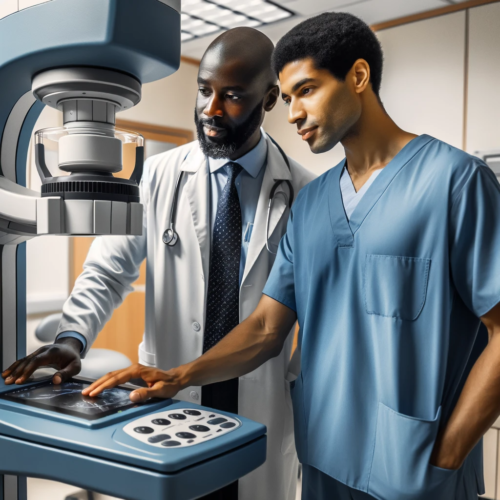In the perennial quest to outmaneuver breast cancer, a formidable new ally has emerged from the digital realm: arti ficial intelligence (AI). Its integration into mammography is not just an augmentation of our diagnostic arsenal—it’s poised to reimagine the entire landscape of breast cancer detection.
AI’s Ascendance in Breast Cancer Detection

Consider the traditional mammogram, a test of patience and precision for radiologists. Into this picture, AI introduces a paradoxical blend of speed and meticulousness, enhancing cancer detection rates with an efficiency that complements, not replaces, the radiologist’s discerning eye.
A groundbreaking study in Lancet Digital Health provides empirical weight to this claim. It reveals a compelling narrative: AI, when allied with a single radiologist, outpaces the combined efforts of two radiologists in detecting breast cancers. This isn’t merely an incremental step forward; it’s a leap towards a new diagnostic synergy.
The Dual Boons of Efficiency and Accuracy

Time, the ever-elusive currency of the medical profession, is reclaimed through AI. Radiologists, with AI as their co-pilot, have halved their reading times—a statistic that heralds not just saved minutes but potentially saved lives. Moreover, the specter of false positives, a source of anxiety and unnecessary interventions, is diminished by AI’s analytical prowess, reducing these occurrences by a notable 6%.
A Tapestry of Data and Human Insight
The study in question is a tableau of over 55,000 women, with 17 radiologists and one AI system at the center. The figures are telling: 261 cancers detected by AI and a radiologist, 250 by two radiologists, and 246 by AI alone. These numbers, while close, signal AI’s emerging role as an indispensable diagnostic partner.
Yet, the article is a clarion call for balance. AI’s ascendancy does not herald the obsolescence of the radiologist but rather underscores the irreplaceable value of human oversight. AI suggests; radiologists validate—a partnership that is as much about the nuance of experience as it is about the brute force of algorithms.
The Hurdles on the Path to Integration
The marriage of AI with mammography is not without its intricacies. The selection and calibration of AI systems require meticulous attention—a compatibility with mammography equipment that ensures precision. Moreover, the technology, while advanced, is not a panacea. AI’s current role is to assist rather than to usurp, and the seasoned judgment of the radiologist remains paramount.
Envisioning the Future of Medical Diagnostics

The integration of AI into mammography is a glimpse into a future where technology and human expertise converge for the greater good. It’s a future where the early detection of breast cancer is not just improved but transformed.
Yet, as we stand on this brink, ethical considerations loom. The sanctity of patient privacy, the security of medical data, and the imperatives to guard against algorithmic bias are challenges that must be navigated with as much care as the clinical implementation of AI itself.
A Rallying Cry for a New Diagnostic Dawn
For healthcare providers, the message is unambiguous: the time to embrace AI in breast cancer detection is now. It is a call to action—not to replace the human element but to enrich it, ensuring that each patient benefits from the combined strengths of AI and the irreplaceable intuition of a radiologist.
Read the Lancet Article here



